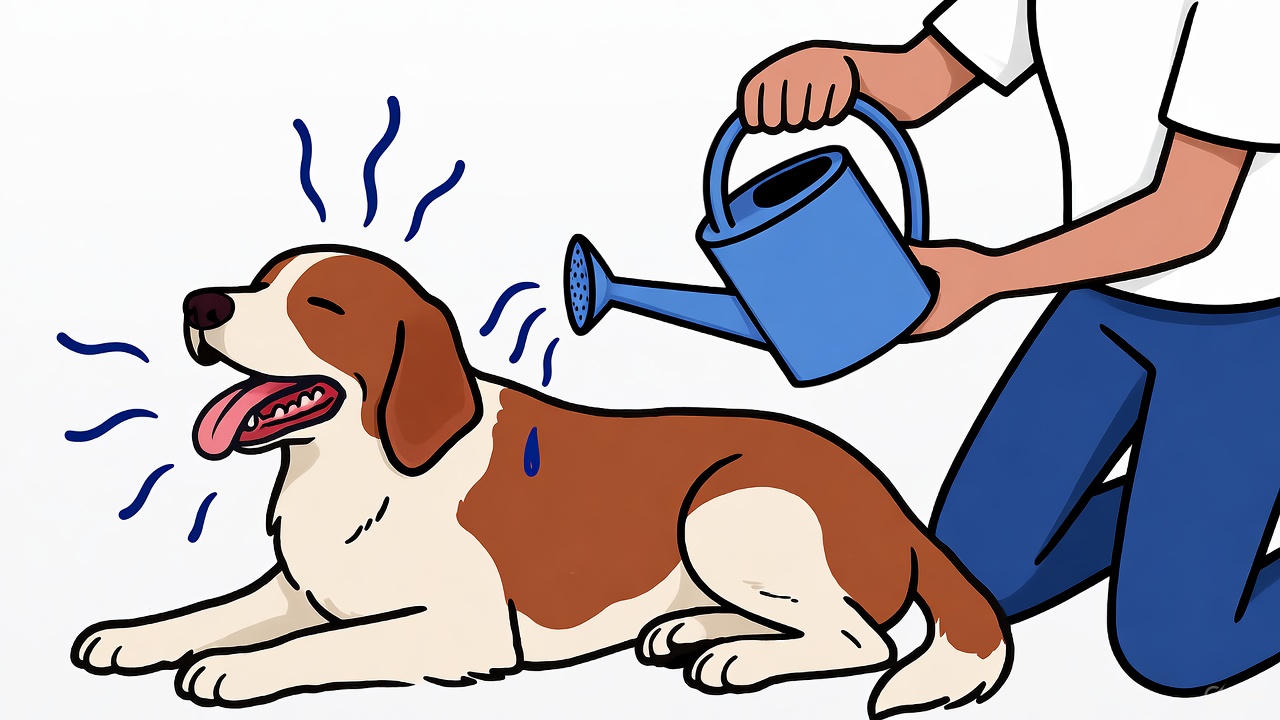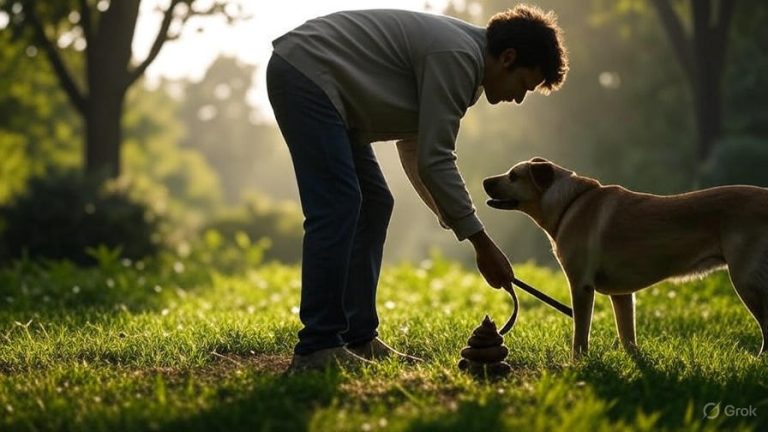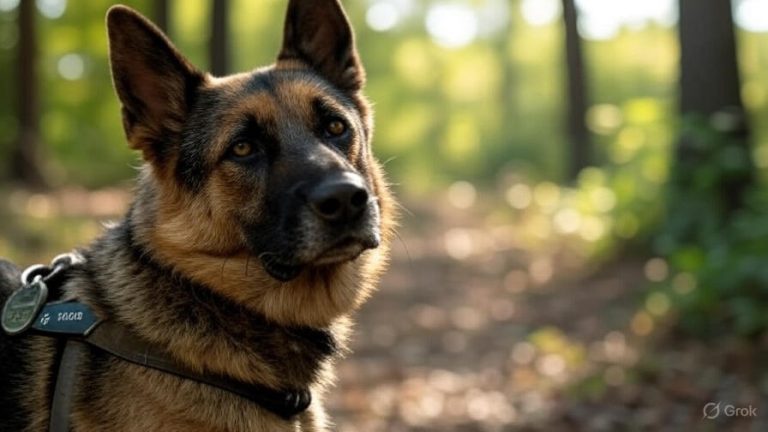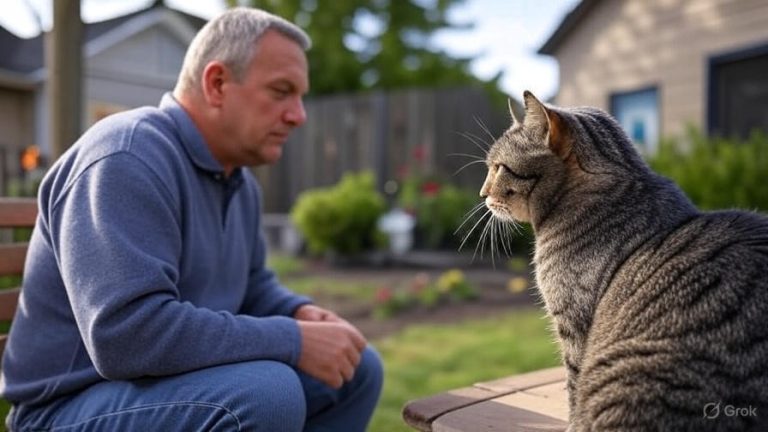How to Cool an Overheated Dog?
Your dog is panting heavily after a walk in the summer heat. His tongue hangs out longer than usual, and he looks exhausted. Is this normal tired behavior, or something more serious? Every pet owner needs to recognize the signs of canine heat exhaustion and know exactly how to respond when their furry friend gets too hot.
Dogs can’t sweat like humans do. They release heat primarily through panting and through small sweat glands in their paw pads. This limited cooling system makes them vulnerable to overheating, especially during hot weather or intense physical activity. When body temperature rises too quickly, heat stroke becomes a life-threatening emergency that requires immediate action.
Recognizing the Warning Signs of an Overheated Dog
You need to spot the early symptoms before a bad situation becomes worse. Dogs show clear signals when their body temperature climbs to dangerous levels.
Excessive panting is often the first red flag. Normal panting helps dogs regulate temperature, but distressed panting looks different. Your dog’s breathing becomes rapid and loud, almost like wheezing. The tongue turns bright red or even purple in severe cases.
Drooling increases dramatically when dogs overheat. Thick, sticky saliva drips from their mouth instead of the usual thin drool. This happens because their body tries desperately to cool down through evaporation.
Watch for behavioral changes too. An overheated dog becomes lethargic and weak. He might stumble while walking or refuse to stand up. Some dogs get disoriented and confused, wandering aimlessly or not responding to their name.
Physical symptoms escalate as body temperature rises. Vomiting and diarrhea signal serious distress. Gums turn from healthy pink to dark red, pale, or even grayish. The dog’s heart races, and you can feel it pounding when you touch his chest.
In extreme cases, dogs suffer seizures or lose consciousness. This indicates heat stroke, a medical crisis where organ damage occurs rapidly. At this stage, you’re racing against time to save your pet’s life.
Immediate Steps to Cool Down Your Dog
The moment you notice overheating symptoms, start cooling your dog down. Speed matters here because every minute counts when preventing organ failure.
Move your dog out of the heat right away. Get him indoors to an air-conditioned room, or at least into complete shade. Direct sunlight continues raising body temperature, so eliminating heat exposure is your first priority.
Offer fresh, cool water but don’t force him to drink. Let your dog lap up water at his own pace. Drinking too much too quickly can cause vomiting, which worsens dehydration. If he won’t drink, you can rub small amounts of water on his gums.
Apply cool (not ice cold) water to his body. Use a hose, shower, or wet towels to dampen his fur. Focus on key areas where blood vessels run close to the skin surface – the belly, inner thighs, armpits, and neck. These spots allow for faster heat transfer from the blood.
Place wet towels on your dog’s body, but change them frequently. Towels trap heat as they warm up, so you need to swap them out every few minutes with freshly soaked ones. This maintains the cooling effect instead of creating an insulating barrier.
Turn on fans to increase air circulation around your dog. Moving air speeds up evaporation from his damp fur, which helps lower body temperature. Position a fan to blow directly on him while he rests.
Check his temperature every five to ten minutes if you have a rectal thermometer. A dog’s normal body temperature ranges from 101 to 102.5 degrees Fahrenheit. Heat exhaustion occurs around 103 to 106 degrees. Above 106 degrees indicates heat stroke. Stop active cooling once temperature drops to 103 degrees to prevent hypothermia.
When to Rush to the Emergency Vet
Some situations demand professional medical care immediately. You can’t handle severe overheating at home alone because internal damage happens quickly.
Take your dog to the emergency vet if his temperature exceeds 105 degrees Fahrenheit. At this point, organs start failing and blood clotting problems develop. Veterinarians have IV fluids, oxygen therapy, and medications that home treatment can’t provide.
Seizures require instant veterinary attention. When overheating causes seizures, brain swelling and permanent neurological damage become real risks. Vets can administer anti-seizure medications and monitor brain function.
If your dog collapses or can’t stand up, get to the animal hospital now. Complete collapse signals multi-organ stress. The heart, kidneys, liver, and brain all suffer when body temperature stays dangerously high.
Vomiting blood or having bloody diarrhea means the intestinal lining is breaking down. This level of damage needs professional intervention. Dehydration becomes critical, and electrolyte imbalances threaten heart function.
Unconsciousness is always an emergency. If you can’t wake your dog or he doesn’t respond to stimulation, drive to the nearest emergency clinic while someone else continues cooling efforts in the car.
Even if symptoms seem to improve at home, call your vet for guidance. Some heat-related complications don’t show up for hours or even days after the initial incident. Kidney failure, for example, can develop 24 to 72 hours later. Your vet might recommend bringing your dog in for bloodwork and monitoring.
Safe Cooling Methods That Actually Work
Certain cooling techniques work better than others. You want effective temperature reduction without causing new problems.
Room temperature water works better than ice water. Ice water constricts blood vessels near the skin, which actually slows heat release from the body’s core. Cool water keeps vessels open and allows efficient heat transfer.
Never cover your dog completely with ice packs or frozen towels. Extreme cold on the skin surface drives blood away from those areas, trapping heat inside the body. Use cool compresses instead and apply them to specific areas rather than the whole body.
Create a cooling station with damp towels laid on the floor. Let your dog lie down on these while you apply more wet cloths to his body. The contact with cool surfaces from below and above helps draw heat out.
Running a cool bath works if your dog is still alert and can stand. Fill the tub with a few inches of cool water and gently pour it over his back and sides. Keep his head above water and support him if he’s wobbly. Don’t leave him unattended in water.
Rubbing alcohol on paw pads is a traditional method, but use it sparingly. The alcohol evaporates quickly and creates a cooling sensation. However, dogs might lick their paws afterward, and ingesting rubbing alcohol is toxic. Small amounts on paw pads are generally safe, but water-based cooling is better.
Indoor air conditioning provides the best environment for gradual cooling. The consistently cool temperature helps stabilize your dog’s core temperature without the risk of cooling too rapidly. Keep him lying on cool tile or hardwood floors rather than carpeting.
Preventing Heat Exhaustion in Dogs
Prevention beats treatment every time. You can avoid scary overheating episodes by taking smart precautions during warm weather.
Schedule walks for early morning or late evening when temperatures drop. The midday sun turns pavement into a hot griddle that burns paw pads and radiates heat upward. If the pavement feels too hot for your bare hand, it’s too hot for dog paws.
Bring water on every outing, no matter how short. A collapsible bowl and water bottle should be standard equipment. Stop for water breaks every 15 to 20 minutes during exercise or play.
Never leave your dog in a parked car, even with windows cracked. Car interiors heat up incredibly fast – the temperature can jump 20 degrees in just 10 minutes. On an 80-degree day, the car interior reaches 100 degrees in less than 10 minutes. Dogs die from heat stroke in parked cars every summer.
Limit strenuous exercise on hot days. Your dog wants to play and run, but his body can’t handle intense activity in high heat. Save energetic play for cooler weather and stick to gentle walks during summer.
Provide constant access to shade and fresh water in your yard. Dogs need a cool retreat when they’re outside. A shaded area allows them to escape direct sunlight and regulate their temperature naturally. Change water bowls multiple times daily so the water stays cool.
Consider cooling products designed for dogs. Cooling mats, vests, and bandanas help some dogs stay comfortable. These products use gel packs, evaporative cooling, or phase-change materials to absorb heat from your dog’s body.
Trim long-haired breeds for summer, but don’t shave double-coated breeds. A groomer can thin out the undercoat while leaving the protective top coat intact. The coat actually provides insulation against heat when properly maintained.
High-Risk Dogs That Need Extra Protection
Some dogs face higher risks of overheating than others. You need extra vigilance if your dog falls into a vulnerable category.
Brachycephalic breeds struggle with heat regulation because of their facial structure. Bulldogs, pugs, boxers, and Boston terriers have shortened snouts and narrowed airways. They can’t pant efficiently, so heat builds up quickly. These breeds need air conditioning on hot days and should avoid outdoor activity when temperatures climb.
Senior dogs don’t regulate temperature as well as younger dogs. Aging affects the body’s thermostat, making older dogs more prone to overheating. They also tend to have underlying health conditions that complicate heat tolerance.
Puppies lack fully developed cooling systems. Their bodies don’t regulate temperature efficiently yet, and they don’t know their limits. Young dogs will play until they collapse if you don’t intervene.
Overweight dogs carry extra insulation that traps heat. The excess body fat makes cooling harder and forces the heart to work overtime. Weight loss helps these dogs handle heat better.
Dogs with thick double coats trap more heat than short-haired breeds. Huskies, malamutes, Newfoundlands, and similar breeds evolved for cold climates. They suffer in hot weather and need careful monitoring during summer months.
Dark-colored dogs absorb more heat from sunlight than light-colored dogs. Black fur acts like a heat magnet, raising body temperature faster during sun exposure.
Dogs with heart disease, respiratory problems, or other chronic conditions have compromised cooling systems. Their bodies can’t handle the stress of high temperatures. These dogs need climate-controlled environments during hot weather.
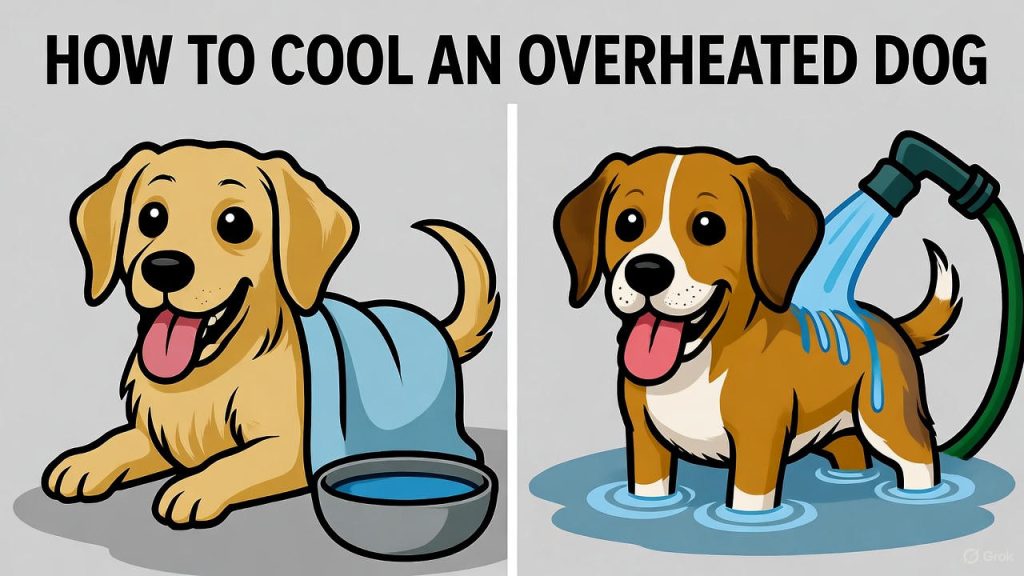
Creating a Dog-Friendly Cool Environment at Home
Your home setup plays a huge role in keeping dogs comfortable during hot weather. Small changes make a big difference in preventing heat-related problems.
Air conditioning is the gold standard for dog comfort. Keep your home at a comfortable temperature when you’re away. Some owners program thermostats to maintain 72 to 78 degrees throughout the day.
Provide multiple water stations throughout your house. Dogs drink more when water is easily accessible. Clean and refill bowls twice daily to keep water fresh and appealing.
Tile, linoleum, or hardwood floors stay cooler than carpet. Many dogs seek out these surfaces instinctively when they’re hot. Make sure your dog has access to uncarpeted areas for lying down.
Block direct sunlight from windows during the hottest part of the day. Curtains or blinds prevent solar heating inside your home. This keeps indoor temperatures more stable and comfortable.
Set up a kiddie pool in a shaded area of your yard. Many dogs love wading in shallow water to cool off. Change the water daily to keep it clean and prevent mosquito breeding.
Freeze treats and toys for your dog to enjoy. Frozen peanut butter in a Kong toy or frozen broth cubes give dogs a fun way to cool down from the inside. These treats provide hydration and entertainment.
Create indoor play alternatives for hot days. Mental stimulation through puzzle toys and training sessions tires dogs out without physical exertion in the heat. A tired dog is a happy dog, even without outdoor runs.
Understanding Heat Stroke Complications
Heat stroke damages the body in ways that aren’t immediately visible. Knowing what happens internally helps you understand why veterinary care matters so much.
Blood clotting problems develop when heat stroke damages blood vessels and platelets. This leads to uncontrolled bleeding in the intestines, lungs, or brain. Bruising appears under the skin, and blood shows up in urine or stool.
Kidney failure occurs because high temperatures damage delicate kidney tissues. The kidneys can’t filter waste properly, and toxins build up in the bloodstream. This complication often appears 24 to 72 hours after the heat incident.
Liver damage happens when extreme heat kills liver cells. The liver performs hundreds of vital functions, and damage disrupts metabolism, detoxification, and protein production. Jaundice (yellowing of skin and eyes) signals liver problems.
Swelling in the brain causes neurological symptoms. Seizures, blindness, behavior changes, and coma result from cerebral edema. Brain cells die when they’re deprived of oxygen and exposed to extreme heat.
Heart damage occurs when the heart muscle becomes stressed from working too hard. Irregular heartbeats develop, and in severe cases, heart failure follows. Cardiac complications can be fatal even after body temperature returns to normal.
Gastrointestinal damage shows up as vomiting, diarrhea, and loss of appetite. The intestinal lining breaks down, allowing bacteria to enter the bloodstream. This triggers sepsis, a life-threatening infection response.
These complications explain why vet monitoring is so important after heat stroke. Even if your dog seems recovered, internal damage might be progressing. Blood tests reveal organ function and catch problems before they become critical.
Recovery and Long-Term Care After Heat Exhaustion
Dogs who survive heat stroke need special care during recovery. The healing process takes time, and some dogs develop lasting health issues.
Rest is essential for the first several weeks. Limit activity to short, gentle walks in cool conditions. Your dog’s body needs energy to repair damaged tissues, not to fuel exercise.
Follow your vet’s medication schedule exactly. Vets often prescribe medications to protect organs, prevent infection, or manage complications. Missing doses compromises recovery.
Monitor your dog closely for signs of lingering problems. Changes in appetite, water consumption, urination, energy levels, or behavior might indicate complications. Report any concerns to your vet promptly.
Feed a high-quality diet that supports organ function. Your vet might recommend a special diet if kidney or liver damage occurred. Proper nutrition aids healing and helps organs recover.
Attend all follow-up appointments. Your vet will run blood tests to check organ function and catch problems early. These appointments aren’t optional – they’re critical for detecting complications before they become severe.
Some dogs develop heat intolerance after experiencing heat stroke. They become more sensitive to warm temperatures and overheat more easily in the future. These dogs need permanent lifestyle changes to stay safe.
Watch for behavior changes that persist after recovery. Anxiety, confusion, or personality shifts might indicate brain damage from heat stroke. Discuss these symptoms with your vet, who might recommend referral to a veterinary neurologist.
The Science Behind Canine Temperature Regulation
Understanding how dogs cool themselves helps you protect them better. Their system differs dramatically from human cooling mechanisms.
Dogs have very few sweat glands. The small number of glands on their paw pads produces minimal cooling. This system is nothing like human sweat glands that cover the entire body.
Panting is the primary cooling method for dogs. Rapid breathing moves air over the moist surfaces of the tongue, mouth, and respiratory tract. Water evaporation from these surfaces removes heat from the blood.
Blood vessels in the tongue and mouth dilate when dogs are hot. Increased blood flow to these areas allows more heat transfer. The thin tissue in the mouth makes an efficient cooling surface.
The respiratory rate increases from about 30 breaths per minute to 300 or more when dogs are hot. This dramatic increase in breathing moves huge amounts of air across moist tissues to maximize evaporation.
Heat exits through areas with less fur coverage. The belly, inner thighs, and armpits have thinner fur and blood vessels close to the skin. These regions act as heat radiators when dogs lie down on cool surfaces.
Dogs evolved from wolves adapted to cooler climates. Domestic dogs inherited this physiology, which explains why many breeds struggle in hot weather. Humans selectively bred dogs for traits like shortened faces, which compromised their cooling efficiency even further.
Recognizing the Difference Between Normal and Dangerous Panting
Not all heavy breathing signals an emergency. You need to distinguish between normal post-exercise panting and distress.
Normal panting happens after physical activity or in warm conditions. The tongue hangs out loosely, and breathing is rhythmic and steady. Your dog’s expression looks relaxed, and the panting slows down within 10 to 15 minutes of rest.
The tongue remains its normal pink color during regular panting. Bright red, purple, or pale gums indicate poor oxygenation and overheating. Color changes always warrant concern.
Normal panting doesn’t interfere with other activities. Your dog can still walk normally, respond to commands, and show interest in surroundings. Exhaustion and disorientation signal something wrong.
Excessive drooling accompanies dangerous overheating. Normal panting produces some saliva, but overheated dogs drool thick, ropy saliva in large amounts. This viscous drool differs from regular spit.
The panting sound changes during heat distress. Instead of rhythmic breathing, you hear wheezing, gasping, or raspy sounds. Noisy breathing indicates respiratory struggle.
Body posture tells you a lot. A hot but stable dog will seek out cool spots and lie down comfortably. An overheated dog in distress can’t get comfortable, stands awkwardly, or collapses.
Summer Safety Tips for Active Dog Owners
You don’t have to stop enjoying outdoor activities with your dog during summer. You just need smart strategies to keep both of you safe.
Choose water-based activities over land exercise. Swimming provides great exercise while keeping dogs cool. Lakes, dog-friendly beaches, or even a backyard sprinkler offer refreshing fun.
Acclimate your dog gradually to warm weather exercise. Don’t suddenly increase activity levels when summer arrives. Build tolerance slowly over several weeks, starting with short sessions.
Learn to read your dog’s signals during activity. When he starts falling behind, seeking shade, or slowing down, it’s time for a break. Don’t push him to keep up with your pace.
Wet your dog down before outdoor activities. A pre-soaked coat helps him start out cooler. Repeat the wetting every 15 to 20 minutes during play or walks.
Use paw protection on hot surfaces. Dog boots or paw wax create barriers between sensitive paw pads and scorching pavement. Test surfaces with your hand before letting your dog walk on them.
Bring a portable fan for outdoor events. Battery-powered or USB fans clip onto strollers or sit on tables. Direct the airflow toward your dog during rest breaks.
Pack a first-aid kit with cooling supplies. Include a thermometer, towels, a spray bottle, and emergency contact numbers for your vet and the nearest emergency clinic.
Keeping Dogs Safe During Power Outages
Power failures during heat waves create dangerous situations for dogs. Planning ahead protects your pets when air conditioning stops working.
Have a battery-powered or hand-crank fan ready. These devices provide air circulation when electricity fails. Some models run on portable power banks.
Store frozen water bottles in your freezer. When power goes out, place these bottles in front of fans to cool the air. Dogs can also lie against wrapped frozen bottles to cool down.
Keep cooling towels and vests charged. Many cooling products don’t require electricity. Evaporative cooling vests work when soaked in water, and some gel-pack products stay cool for hours.
Identify air-conditioned locations where you can take your dog. Pet-friendly hotels, friends’ homes, or even your car with the AC running (while you’re in it) can serve as emergency cooling spots.
Move to the coolest room in your house. Basements stay cooler than upper floors. Interior bathrooms with tile floors also provide relief.
Create cross-ventilation by opening windows on opposite sides of your home. This promotes air movement even without fans.
Stay alert for overheating signs. Without AC, indoor temperatures can rise quickly. Monitor your dog constantly during power outages on hot days.
Your Action Plan for Hot Weather Dog Safety
Now you know how to recognize and respond to canine overheating. Having a clear action plan makes you confident and prepared.
Start by assessing your dog’s risk factors. Age, breed, health status, and coat type all influence vulnerability. High-risk dogs need extra precautions and closer monitoring.
Establish cooling routines before problems develop. Make fresh water, shade access, and temperature management part of your daily habits during warm months.
Keep emergency numbers accessible. Program your vet’s office and the nearest emergency animal hospital into your phone. Know the fastest route to emergency care.
Practice taking your dog’s temperature at home. If you’ve never used a rectal thermometer on your dog, try it during a calm moment so you know how to do it during an emergency.
Educate family members about heat safety. Everyone in your household should recognize danger signs and know the cooling protocol.
Trust your instincts when something seems wrong. You know your dog better than anyone. If behavior changes or you feel concerned, take action immediately. Better safe than sorry when it comes to heat emergencies.
Dogs depend completely on us to keep them safe from heat dangers. You can’t rely on them to limit their own activity or seek help. The responsibility falls entirely on you as the owner. By staying alert, preparing properly, and responding quickly to warning signs, you’ll keep your furry friend safe and healthy through every hot summer day.

